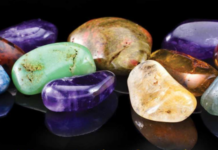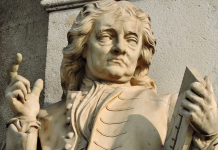
Tao of Immortality: The Four Healing Arts and the Nine Levels of Alchemy, by Mantak Chia and William U. Wei
Destiny Books, 9781620556702, 384 pp, 2018
When I asked to review the Tao of Immortality: The Four Healing Arts and the Nine Levels of Alchemy, I expected to like it. Mantak Chia is a well-known Taoist master. If you’ve seen those posters of a guy in a white uniform projecting colourful energy from his hands in outer space, that’s him. He teaches internationally, and is also a prolific writer. I’ve read and practiced with a couple of his books, but there are so many that I’ve had trouble figuring out where to start. The cover text describes this book as a “primer not only on the foundational practices of the Universal Healing Tao system but also a condensed guide to the esoteric practices of Inner Alchemy.”
This sounded exactly like what I was looking for. I practice a few Taoist inner alchemy exercises, and have found them interesting and useful. Probably the best known of these is microcosmic orbit breathing, which involves circulating energy up the spine and down the front of the body. I’ve always wanted to learn more, but figuring out how to move forward hasn’t been all that clear. I was hoping this book would bridge that gap.
But, the trouble starts on the first page, which warns that none of these exercises should be undertaken without personal transmission and training from a certified instructor, at the risk of injury or health problems. I have mixed feelings about this, as it seems a bit misleading not to warn readers that they shouldn’t get The Tao of Immortality with the intention of using it to start a practice.
On the other hand, the warning does make sense given the rest of the content. For example, the entirety of the instructions for the first exercise are:
1. First you focus, concentrate, and move energy to your lower tan tien [the location of the tan tien energy center is explained in the text].
2. Then you feel love, joy and happiness, which connect you to the violet light.
3. You will experience the violet light with the activation of sexual energy.
Disregarding the above-mentioned warnings, I attempted to follow these instructions. I got entirely lost somewhere around step two, though as far as I know I didn’t suffer any injuries.
While I’m frustrated with The Tao of Immortality, I don’t mean to devalue the energy medicine tradition itself. I think it can be a powerful way of working, and it’s true that it’s not always easy to describe in words — especially outside of one’s native language, which seems to be the case in this instance for Chia and his co-writer William Wei.
On reading further, it seems the intended audience is students who are already pretty advanced at working with the inner alchemy system. For those students,
Tao of Immortality might be a really helpful aid. It’s certainly a well-organized and contains fairly extensive set of notes on a wide variety of possible practices, which might otherwise be confusing to navigate after only a few classes. However, I do wish this was made more clear, because I don’t think it’s what most of us expect to find in something advertised as a primer.









